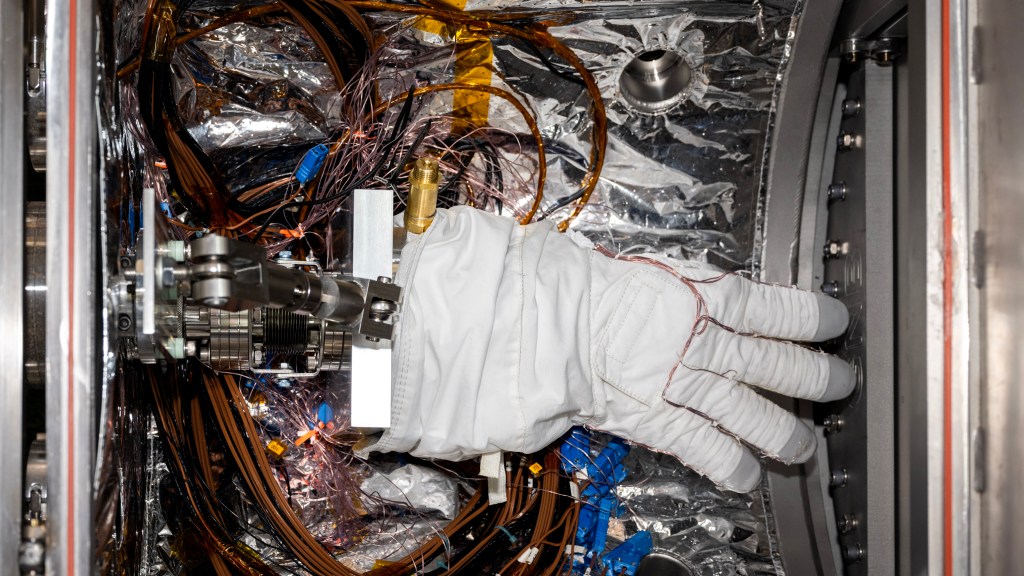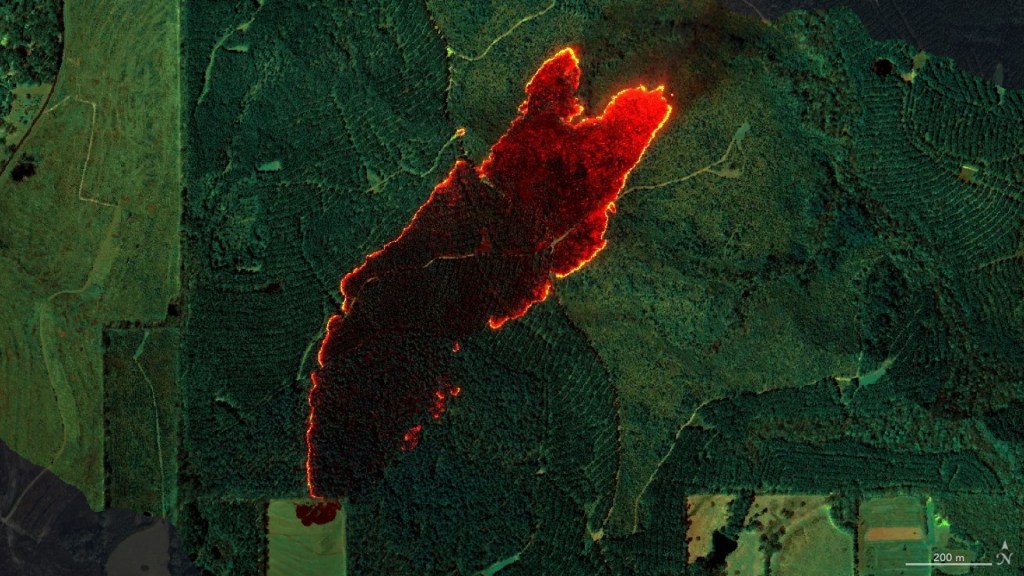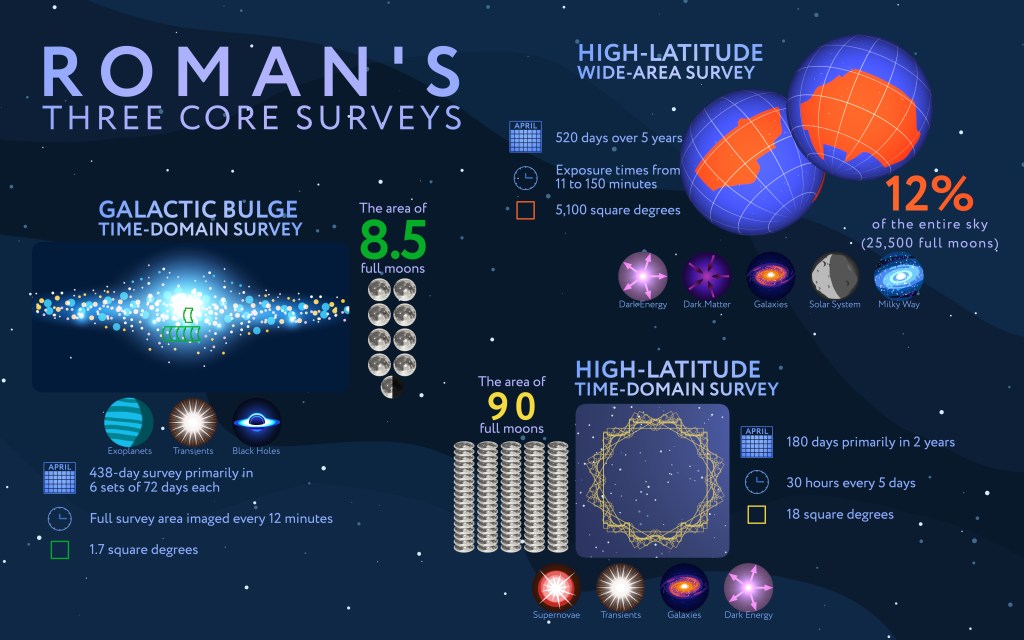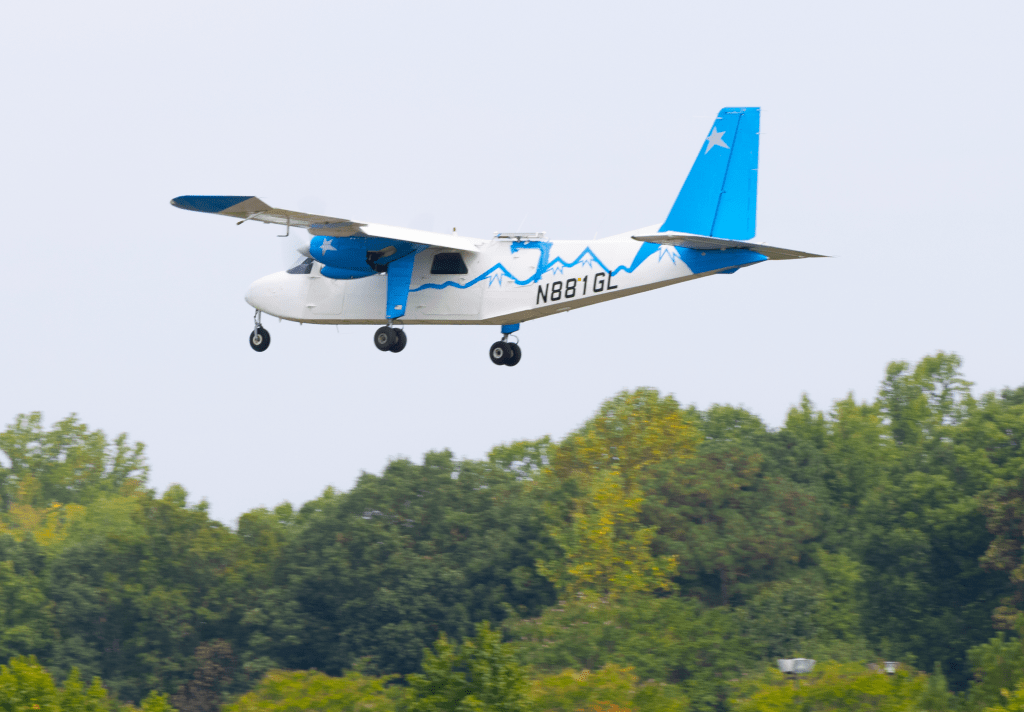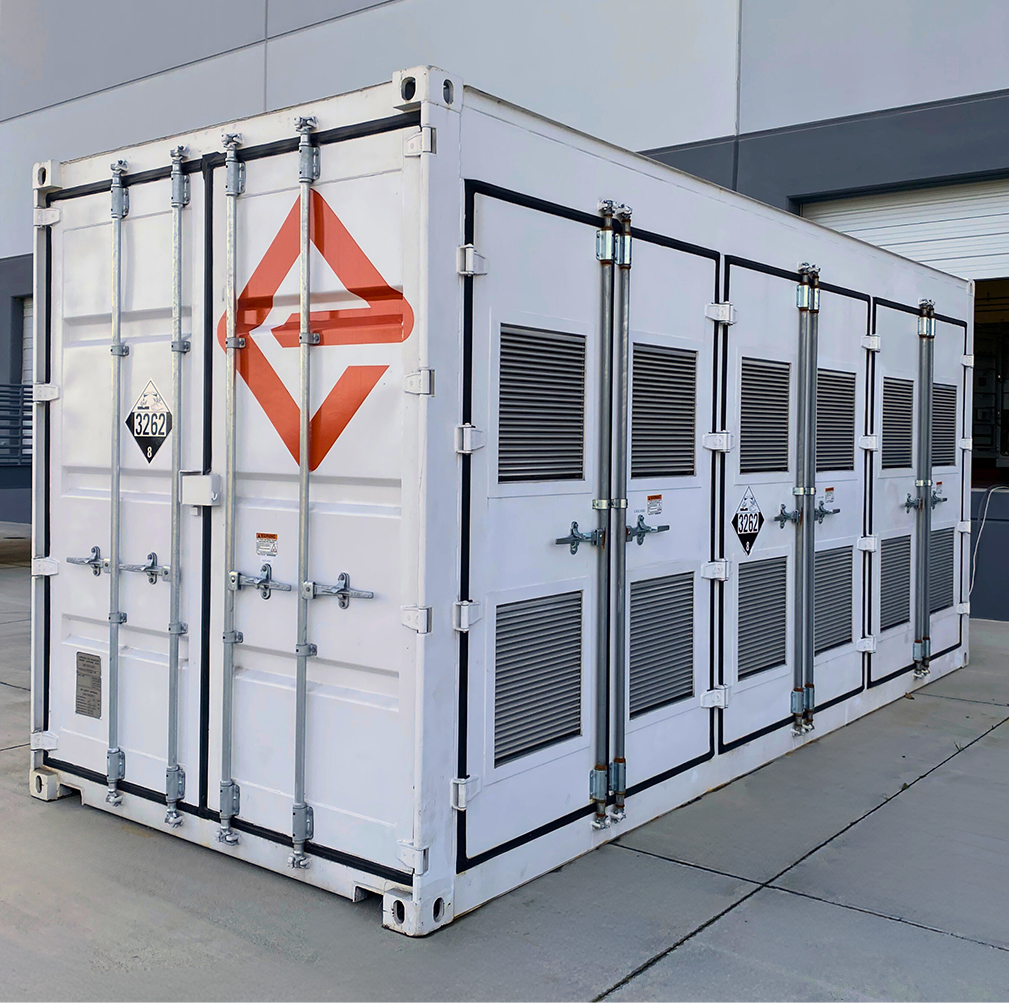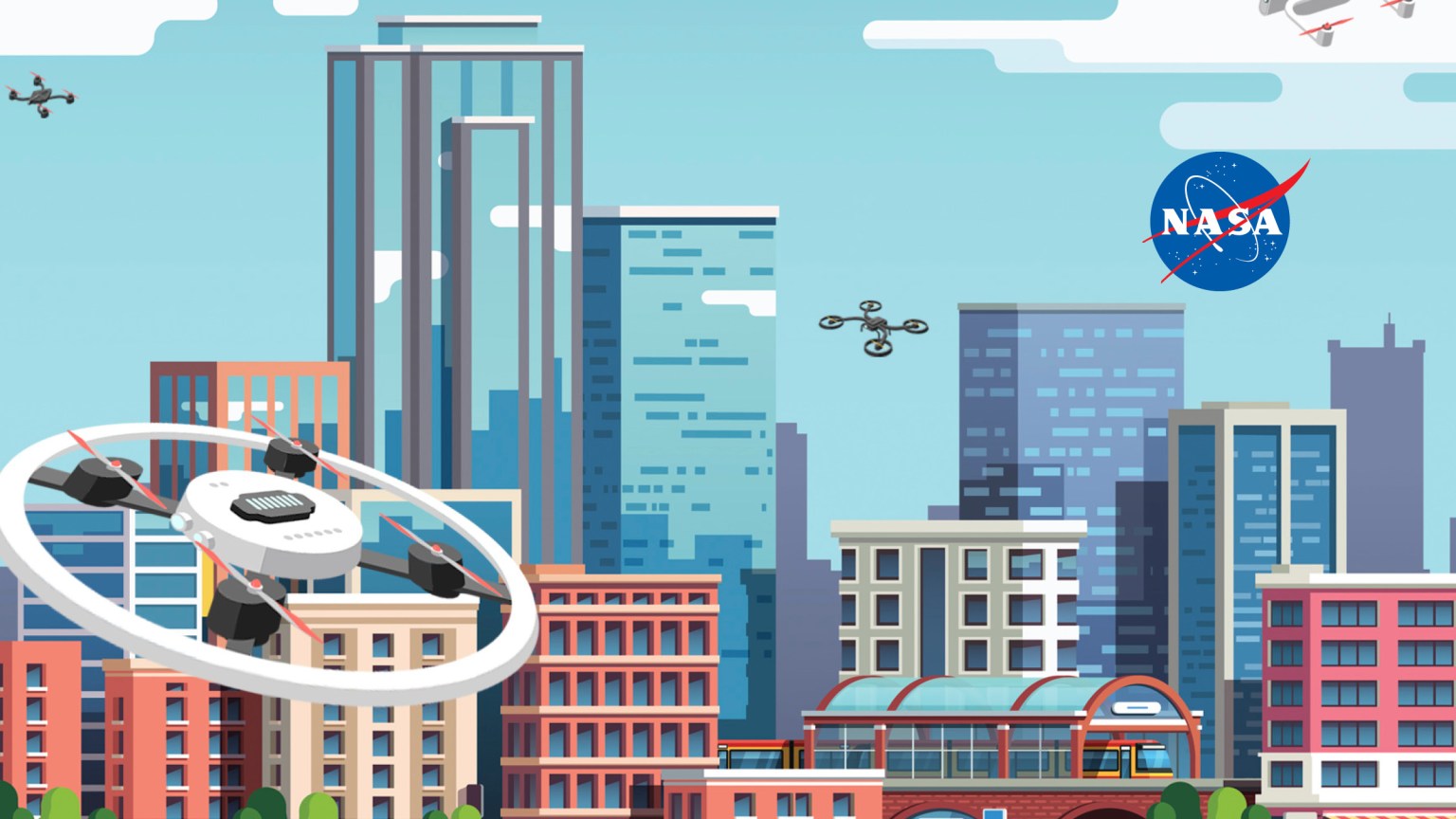Phase II-Extended (II-E)
Phase II-E awards often act as the “bridge” between Phase II and other Post-Phase II Opportunities by promoting further research and development (R&D) efforts and supporting the commercialization of innovations that have been developed under the Phase II contract. While it has a smaller overall funding amount than Post Phase II Opportunities like CCRPP and Phase II Sequential, Phase II-E reduces risk by allowing an investor to contribute funds that the NASA SBIR/STTR program will match, up to $375,000, for an additional funding total of $750,000 on top of a company’s Phase II award.
NASA sends out emails with application instructions to eligible small businesses approximately every two months. The most recent cutoff date for Phase II-E applications was March 10, 2025.
II-E Success
Mango Materials, working with the Colorado School of Mines, is an example of how one small business used a Phase II-E to advance the innovations in their STTR project and prepare for an eventual Civilian Commercialization Readiness Pilot Program (CCRPP) award.
Learn More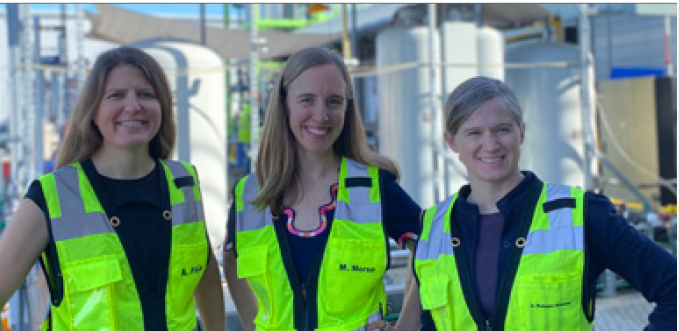
To qualify for the Phase II-E Option, eligible firms must secure an investor from outside the NASA SBIR/STTR program (non-SBIR/STTR investor) to contribute funding towards furthering the technology’s development. The investor can be from various sources, including other NASA programs, other government agencies, or private-sector investors, depending on the strategy for the research and commercialization of the technology. Below are specific examples of what does and does not qualify as investment for Phase II-E proposals. Listed are some of the key investor requirements and restrictions as provided in the below section 1.5.1:
- Investor(s) must be external to the SBIR/STTR Programs, which may include such entities as another company, a venture capital firm, an individual investor, a non-SBIR/STTR government program, or any combination of the above.
- An external investor cannot include the owners of the small business, their family members, and/or “affiliates” of the small business, as defined in Title 13 of the Code of Federal Regulations (C.F.R.), Section 121.103.
- Internal funds from the firm are not acceptable.
- Firms may have multiple investors.
- Pre-existing investments will not be accepted (e.g., non-Government funds obligated/transferred more than 60 calendar days prior to award will not be accepted).
- Government and State Government funds obligated/transferred more than 90 calendar days prior to award are not acceptable.
- Incremental future funds will not be accepted as qualifying investments.
- In-kind contributions from an external investor are not acceptable.
- Purchases resulting from a purchase order from an external investor are not acceptable.
See section 1.5 for more information on what does and does not qualify as investments including limitations on in-kind contributions, subcontracting back to the investor, and purchases.
NASA sends out emails with application instructions to eligible small businesses approximately every two months. The most recent Phase II-E cutoff date for applications was March 10, 2025.
Use the below links to jump to the II-E information you are looking for:
Phase II Extended Guidelines | Guidance on Investors | Proposal Requirements
Exercising Contract Options | Government Investments | Remedy Deficiencies
Templates
1.0 Phase II Extended Guidelines
NASA has developed the Phase II Extended Option (Phase II-E) to further encourage the transition of SBIR/STTR technologies into NASA programs and missions; NASA acquisition programs, other Agency’s programs, as well as the private sector. Under this initiative, the Program will provide an eligible Phase II small business with additional Program funds matching the investment funds secured by the small business from non-Program sources, other NASA programs, other Agencies or the private sector.
1.1 General Phase II Extended Information
The objective of the Phase II-E Option is to further encourage the advancement of innovations developed under Phase II via an option to further R/R&D efforts underway on active Phase II contracts that are in good standing with NASA. Eligible firms shall secure a non-SBIR/STTR investor to contribute funding towards further enhancing the research to qualify for this option. The investor may be a non-SBIR/STTR NASA or NASA program; or may be an investor external to NASA, from another government agency or the private sector, depending on the strategy being pursued for enhancing the technology for further research, infusion, and/or commercialization.
1.2 Matching Funding
Under this option, the NASA SBIR/STTR Program will match the investment funds with SBIR/STTR funds, on a 1-for-1 basis, to extend an existing Phase II project to perform additional R/R&D. The fund matching levels SBIR/STTR will provide will depend on matching levels offered at time of the Phase II-E proposal and availability of funds; please refer to the Post Phase II Opportunities page for matching levels and other related information.
The non-SBIR or non-STTR investment contribution is not limited.
The intent of the investment funding is that this is co-funded with new fully obligated/transferred funds that are to be co-spent in parallel to the Phase II-E award. Pre-existing investments will not be accepted, e.g., 1) non-Government funds obligated/transferred more than 60 calendar days prior to award will not be accepted and 2) Government and State Government funds obligated/transferred more than 90 calendar days prior to award are not acceptable.) See section 1.5.1 for more information on what does and does not qualify as investments including limitations on in-kind contributions, subcontracting back to the investor, and purchases. If selected, the small business firm will be contacted and notified of the amount of time they will have to have funds transferred and to show proof of funds. Note that NASA does not take funds from the investor; funds must be transferred to the firm.
1.3 Period of Performance
NASA expects the period of performance to be commensurate with the total SBIR/STTR and NASA internal investor funding received. A Phase II period of performance of less than 18 months will preclude the Phase II from eligibility for a Phase II-E option. This does not apply to SBIR Ignite Phase II efforts.
1.4 Definition of an Investor
Investor(s) must be external to NASA’s SBIR/STTR Program, but include entities such as a NASA entity (e.g., program, initiative, or center) other than the NASA SBIR/STTR Program, a non-SBIR/non-STTR government program, another company, a venture capital firm, an individual “angel” investor, or any combination of the above. An investor cannot include the owners of the small business, their family members, and/or “affiliates” of the small business, as defined in Title 13 of the Code of Federal Regulations (C.F.R.), Section 121.103.
SBIR/STTR Program funds from any agency, including NASA, cannot be used as qualifying investments. This includes Phase I, Phase II, and/or other Post Phase II awards funded via SBIR/STTR Program funds. Phase III contracting mechanisms where the funds are newly obligated from a mission, project, non-SBIR/STTR program, or the like, from any agency, are allowed. Note that a Phase III contract may be the most expedient mechanism to provide investments from NASA or other government agencies; any Federal Agency may enter into a Phase III SBIR/STTR agreement at any time with a Phase II Awardee, regardless of which agency originated the Phase II award.
1.5 General Guidance on What Qualifies As Investment
The investment must be used to fund work that directly extends the work done in the Phase II.
Commitment must be made prior to the award, but the expenditure must be concurrent with the Phase II-E performance. The Federal Agency or NASA internal investor’s funds must pay for activities that further the development and/or commercialization of the company’s SBIR/STTR technology beyond the Phase II work (e.g., further R&D, manufacturing, marketing, etc.).
Non-Federal agency investments must be an arrangement in which the external investor provides funding to the small business in return for such items as: equity, a share of royalties, rights in the technology, a percentage of profit, or any combination of the above. Additional funding associated with Phase II-E shall further the technology of the original SBIR Phase II contract.
For investments from sources external to the Federal Government, NASA considers factors such as ownership, management, previous relationships with or ties to another concern and contractual relationships, in determining whether affiliation exists. Individuals or firms that have identical or substantially identical business or economic interests, such as family members, persons with common investments, or firms that are economically dependent through contractual or other relationships, may be treated as one party with such interests aggregated.
Note that submission and/or selection of your proposal for award does not constitute an acceptance of the investment. Contract award will be contingent on acceptable proof of investment, and proof of qualifying/acceptable investment is subject to the discretion of and acceptance by the Contracting Officer and in accordance with any applicable policy, statute, or regulation
- NASA Flight Opportunities is interested in participating as a Post Phase II investor, specifically for the use of suborbital flight testing to help advance development or commercialization of the technology. Learn more about FO investment
1.5.1 Specific Examples of What Does and Does Not Qualify As Investment
This section contains questions and answers regarding NASA’s guidance for the types of investment from external investors that qualify as an investment under the Phase II-E program. The following includes specific examples of company-investor relationships and whether these relationships qualify as a Phase II-E investment or not. If you have questions about whether a particular company-investor relationship qualifies, please contact the NASA SBIR/STTR Help Desk at agency-sbir@mail.nasa.gov. The Helpdesk will refer any policy or substantive questions to appropriate NASA personnel for an official response.
| Question: | Answer: |
|---|---|
| 1. Can a small business contribute its own internal funds to qualify for the Phase II Extended? | No. NASA is seeking external, third party validation of the technology, and requires that the funds come from an external investor. Please note that a subcontractor of the SBIR/STTR project will not qualify as an external investor. |
| 2. Company A spins off company B, which wins a SBIR award. Company A then wants to contribute matching funds to qualify company B for the Phase II Extended. Can A be considered an external investor for purposes of the Phase II Extended? | In making our determination of whether company A is an external investor, we would be guided by the definition of “affiliates” in 13 C.F.R. Sec. 121.103, discussed above. Our presumption is that in this example A and B would be considered “affiliates,” and that A would therefore not be an external investor for purposes of the Phase II Extended. |
| 3. Small business A wins a SBIR award. The president of A is a major shareholder in another company B, which wants to contribute matching funds to qualify S for the Phase II Extended. Can B be considered an external investor? | Our presumption is that B would not be considered an external investor. Our determination would be guided by whether the president’s stake in B is large enough that A and B would be considered “affiliates” under 13 C.F.R. Sec. 121.103. Subsection (c) of Section 121.103 specifically discusses affiliation based on stock ownership: c. Affiliation based on stock ownership. A person is an affiliate of a concern if the person owns or controls, or has the power to control 50 percent or more of its voting stock, or a block of stock which affords control because it is large compared to other outstanding blocks of stock. If two or more persons each owns, controls or has the power to control less than 50 percent of the voting stock of a concern, with minority holdings that are equal or approximately equal in size, but the aggregate of these minority holdings is large as compared with any other stock holding, each such person is presumed to be an affiliate of the concern. If A and B are found to be affiliates, we would determine that B is not an external investor. |
| 4. Does the external investor have to be a single entity (e.g., a single venture capital firm) or can it be more than one entity (e.g., two angel investors and a venture capital firm)? | It can be more than one entity. |
| 5. Small business A contributes matching funds to small company B in order to qualify B for the Phase II Extended, and, at the same time, B contributes matching funds to A in order to qualify A for the Phase II Extended. Do A and B qualify as external investors under the Phase II Extended? | No. A and B’s relationship is such that their investment in each other would not provide external validation of the commercial potential of their respective SBIR projects. We would therefore not consider them to be external investors for purposes of the Phase II Extended. |
| 6. Can a family member of an employee of small business A contribute funds to qualify A for the Phase II Extended? | No, except under rare circumstances. Again, we would be guided by the definition of “affiliates” in 13 C.F.R. Sec. 121.103. The family member presumptively would be an affiliate of company A and not an external investor. |
| 7. Venture capital firm A currently is a 22 percent shareholder in small company B. Can A invest additional funds in B to qualify B for the Phase II Extended? | Our presumption is yes. In making our determination, we would be guided by whether A and B are “affiliates,” as defined in 13 C.F.R. Sec. 121.103. Section 121.103 provides (in subsection (b)(5)) that a venture capital firm is not affiliated with a company if the venture capital firm does not control the company — e.g., by owning more than 50 percent of the stock of a small company (prior to its investment under the Phase II Extended), as described in 13 C.F.R. 107.865. |
| 8. Large company A makes a cash investment in small company B, and then serves as a subcontractor to B on an SBIR project. Can A’s investment in B count as a matching contribution for purposes of the Phase II Extended? | Only A’s cash investment net of its subcontracting effort can count as matching funds for purposes of Phase II Extended. For example, if A invests $750,000 in B and subcontracts with B for $250,000, only A’s net contribution ($500,000) can count as matching funds for purposes of the Phase II Extended. |
| 9. Company A makes a cash investment in small company B for purposes of Phase II Extended, and also enters into a separate contract with B under which A provides certain goods/services to B in return for $500,000. Can A’s cash investment in B count as a matching contribution for purposes of the Phase II Extended? | As in the previous example, only A’s cash investment net of the $500,000 it receives from B can count as matching funds for purposes of the Phase II Extended. |
| 10. A group of investors wishes to invest funds in small company A to qualify A for the Phase II Extended. One of the investors is a family member of A’s president, who wants to contribute $50,000 toward the effort. Can the group’s investment in A count as a matching contribution to qualify A for the Phase II Extended? | The family member’s investment of $50,000 does not count, as the family member is not an external investor (see item (6) above). Contributions of the other investors can count provided that they meet the other conditions for the Phase II Extended (e.g., each must be an external investor). |
| 11. Can a loan from an external party qualify as an “investment” for purposes of the Phase II Extended? | No. The rationale behind the Phase II Extended is that an external party is betting on the company’s success in bringing the technology to market as an investor — not just its ability to recover a loan as a lender. |
| 12. How about a loan that is convertible to equity? | A loan that is convertible to equity at the company’s discretion would count as an investment under the following circumstances: (1) the loan is provided by a public entity (e.g., a state agency), or (2) the loan is provided by a private entity, and the SBIR company actually converts the loan to equity before the Phase II-E option contract is exercised. |
| 13. Can in-kind contributions from an external investor count as matching funds under the Phase II-Extended? | No. The matching contribution must be in funds, regardless of source. A cash contribution is a stronger signal of the external investor’s interest in the technology, and can be readily verified. |
| 14. Can purchases of a purchase order from an external investor count as a matching contribution under the Phase II-Extended? | No. Purchases will not be considered an investment, since a purchase may only represent a procurement need, not a desire to further the technology. Refer to question 15. |
| 15. If large company A pays small company B for work related to B’s SBIR project and expects a deliverable (goods or services) from B in return, would that qualify as an “investment”? | This arrangement would not qualify as an investment, for the same reason a loan does not qualify. Specifically, in this situation the large company is not betting on the small company’s success in bringing the technology to market, but merely is looking to purchase a deliverable. Refer to item 14. |
| 16. Can entity A’s investment in small company B during the first month of B’s Phase I SBIR project count as a matching contribution to qualify B for the Phase II-Extended? | No. The investment must occur within 45 calendar days of the company’s notification of selection, without constraints or contingencies. |
| 17. Small company A is collaborating with a university on an STTR project. Investor B wishes to provide funds to the university in order to qualify A for the STTR Phase II Extended. Can B’s investment in the university count as a matching contribution to qualify A for the Phase II-Extended? | In order to qualify A for the STTR Phase II Extended, B’s investment of funds must be in small company A, not in the university. A can then subcontract some of the funds to the university. |
| 18. Must the activities funded by the investor be explained in the technical proposal for the small company’s Phase II-E option? | Yes. The external investor’s funds must pay for activities that further the development and/or commercialization of the company’s Phase II work. Including this information in the proposal assists with verification. |
| 19. Our small business has existing contracts and/or grants (non-Federal Government Organization). Can these count as matching investments? | Yes, if the existing contract or grant is directly related to the Phase II-E work proposed and the money targeted for the II-E effort has not yet been obligated/transferred to the firm. Funds obligated/transferred more than 60 calendar days prior to notification of selection will not be accepted as qualifying investments. |
| 20. Our small business has existing NASA, Other Federal Government Agency, or State Government contracts and/or grants. Can these count as matching investments? | Yes, if the existing contract or grant is directly related to the Phase II-E work proposed and the money targeted for the Phase II-E effort has not yet been obligated/transferred to the firm, then funds transferred at the time of the Phase II-E award may be counted towards the match; e.g., a Phase III contract for the same technology or a modification and funding for another contract that specifically relates to the technology. NASA, Other Government Agency, or State Government funds obligated/transferred more than 90 calendar days prior to notification of selection will not be accepted as qualifying investments nor will incremental future funds be accepted as qualifying investments. Second, the small business will need to receive a Modification for the existing government contract to reflect the support of the Phase II-E effort. The Modification must include the following information: SBIR or STTR Phase II title, SBIR or STTR Phase II contract number, Summary of the Phase II-E effort to be funded with the Modification, and Amount of funding for the Phase II-E effort |
| 21. Can my investment be from an international partner? | Potentially yes; however, limitations exist including, but not limited to, firms should be aware of export control and ITAR/EAR restrictions regarding dissemination of research in establishing agreements with their investors. It is the responsibility of the firm to verify that they are not violating pertinent regulations. Also, investments will not be accepted from countries on the NASA list of “Designated Countries” and other countries from which NASA may be prohibited from doing business with. Proof of qualifying/acceptable investment is subject to the discretion of and acceptance by the Contracting Officer and in accordance with any applicable policy, statute, or regulation. This NASA list of “Designated Countries” is a compilation of countries with which the United States has no diplomatic relations. Countries determined by Department of State to be “State Sponsors of Terrorism” or identified by the Department of Commerce as “Terrorist Supporting Countries, ”Countries under Sanction or Embargo by the United States. Countries of Missile Technology Concern. Please see NASA’s Designated Countries List available for download here: https://www.nasa.gov/oiir/export-control/ |
2.0 Phase II Extended Proposal Requirements
Only small businesses that are in good standing with NASA and have active NASA SBIR/STTR Phase II contracts are eligible to apply for participation in the Phase II-E Option opportunity.
The Phase II-E proposal period opens 12 months after the contract start date (or 6 months for Ignite), and expires 60 days before the contract end date. Proposals received after this period will be deemed late and not considered. Please note there is no guarantee that the Government will exercise a Phase II-E option based on the fact that there are limited funds designated for the options.
During the Phase II effort, the small business shall submit a Phase II Extended proposal through Submissions ProSAMS. It should be noted that all contractual rules and regulations that are applicable to the Phase II contract also apply to the Phase II-E since it is a continuation of the work.
Since the Phase II-E is a contract option, there will be no feedbacks as defined by Part 15 of the FAR as to why the option was not exercised.
Phase II-E funding shall not be used to cover work that was proposed as part of the Phase II contract, e.g., incomplete or unsuccessful R&D.
2.1 Phase II Extended Proposal Package
A Phase II-E proposal package consists of the items listed below, and shall be submitted through the NASA Proposal Submission ProSAMS.
SBIR Ignite should submit Phase II-E proposal packages in accordance with submission instructions included in the Phase II-E option notification. Templates can be found in the Templates section at the top of this page.
2.1.1 Proposal Summary
Provide the TRL, a brief summary of the proposal, duration (in months), and potential NASA- and Non-NASA applications.
2.1.2 Proposal Budget
Provide the budget summary including estimated costs with detailed information for Direct Labor, Overhead, ODCs, Subcontractors/Consultants, G&A, Profit/Cost Sharing, and the Investor(s). This information will be populated via a ProSAMS form.
- Note that the budget will require information for the efforts being conducted with both the SBIR/STTR Program matching funds as well as the external investment funds
The Phase II-E option, if exercised, extends the performance period for a Phase II award, and as such, offerors must ensure that their proposed budgets follow Phase II requirements for work allocation. The minimums will be applied to the full proposed performance period (base + option).
| SBIR Phase II Subcontracts/Consultants | STTR Phase II Subcontracts/Consultants |
| The proposed subcontracted business arrangements including consultants, must not exceed 50 percent of the research and/or analytical work [as determined by the total cost of the proposed subcontracting effort (to include the appropriate OH and G&A) in comparison to the total effort (total contract price including cost sharing, if any, less profit if any)]. Occasionally, deviations from these SBIR requirements may occur, and must be approved in writing by the Funding Agreement officer after consultation with the agency SBIR/STTR Program Manager. | A minimum of 40 percent of the research or analytical work must be performed by the proposing SBC and minimum of 30 percent must be performed by the RI. Any subcontracted business effort other than that performed by the RI, shall not exceed 30 percent of the research and/or analytical work [(as determined by the total cost of the subcontracting effort (to include the appropriate OH and G&A) in comparison to the total effort (total contract price including cost sharing, if any, less profit if any)]. Deviations from these STTR requirements are not allowed, as the performance of work requirements are specified in statute at 15 USC 638(e). |
2.1.2.1 Letter of Commitment
A letter of commitment from the investor shall be provided during the proposal submission period in the Proposal Budget form in ProSAMS (similar documentation without a corresponding commitment letter will not be accepted). The letter of commitment must contain the following information:
- The investor contact information including their business address, title, email address, phone number, and be on official letterhead;
- The NASA internal investor’s willingness to verify the commitment;
- The total amount of the investment, accompanying an acknowledgment that the investment is being made in response to and referencing the company’s specific Phase II R&D effort;
- An acknowledgment that the entire amount of unencumbered matching funds will be available and transferred within 45 calendar days of the small business notification that it has been selected a Phase II-E Option without constraints or contingencies; and
- If the investor is a government agency, an acknowledgment that the Contracting Officer has a purchase request and is working to negotiate a contract is sufficient.
- Statement of investment use
- For an investment from a NASA, or other government, program the statement shall include a brief statement of how the resulting Phase II-E technology will be integrated into the acquisition program’s future activities and how they will provide funding to the SBC.
- For investment(s) from a private sector investor, it should include a brief statement of how the investment will further the technology originally proposed in the Phase II, or the commercialization of a product resulting from the Phase II.
Please use the Phase II-E Letter of Commitment template in the Template section at the top of this page.
The investor letter must clearly identify the small business firm name that this investment commitment is being provided to and this must be consistent with the firm who is submitting the Phase II-E proposal.
For NASA project investments, please refer to ‘NASA Investments’ for additional guidance.
Inadequate and/or non-compliant letters may result in the proposal being deemed ineligible for award without further evaluation.
2.1.3 Technical Proposal
A concise technical proposal for the Phase II Extended effort should be submitted as a PDF file.
The technical proposal must state the specific objectives of the Phase II-E effort and provide a detailed work plan defining specific tasks and the methods planned to achieve each task, performance schedules, project milestones, and deliverables. The technical proposal must address how it will significantly improve upon the work performed in the Phase II. The technical proposal must show separately the work done for the Phase II-E SBIR/STTR portion from the portion funded by NASA internal and/or external investor matching funds
There are no length requirements or limitations for the technical proposal.
2.1.4 Briefing Chart
An updated briefing chart with non-proprietary information for the Phase II-E work proposed shall be provided with the proposal; this briefing chart may be freely distributed by the Government.
2.1.5 Commercialization Plan
Per the guidelines outlined in the Solicitation, an updated plan for commercialization (Phase III) of the proposed innovation must be provided. The commercialization plan should be submitted as a PDF file and at a minimum, shall address the following areas:
- Market Feasibility and Competition: Describe (a) the target market(s) of the innovation and the associated product or service, (b) the competitive advantage(s) of the product or service; (c) key potential customers, including NASA mission programs and prime contractors; (d) projected market size (NASA, other Government and/or non-Government); (e) the projected time to market and estimated market share within five years from market-entry; and (f) anticipated competition from alternative technologies, products and services and/or competing domestic or foreign entities.
- Commercialization Strategy and Relevance to the Offeror: Present the commercialization strategy for the innovation and associated product or service and its relationship to the SBC’s business plans for the next five years. Infusion into NASA missions and projects is an option for commercialization strategy.
- Key Management, Technical Personnel and Organizational Structure: Describe: (a) the skills and experiences of key management and technical personnel in technology commercialization; (b) current organizational structure; and (c) plans and timelines for obtaining expertise and personnel necessary for commercialization.
- Production and Operations: Describe product development to date as well as milestones and plans for reaching production level, including plans for obtaining necessary physical resources.
- Financial Planning: Delineate private financial resources committed to the development and transition of the innovation into market-ready product or service. Describe the projected financial requirements and the expected or committed capital and funding sources necessary to support the planned commercialization of the innovation. Provide evidence of current financial condition (e.g., standard financial statements including a current cash flow statement).
- Intellectual Property: Describe plans and current status of efforts to secure intellectual property rights (e.g., patents, copyrights, trade secrets) necessary to obtain investment, attain at least a temporal competitive advantage, and achieve planned commercialization.
3.0 General Information on Exercising the Phase II Extended Contract Option
3.1 Exercising the Phase II Extended Contract Option
If it is decided that the contract option should be exercised, the firm will receive a “Notice of Intent” from the NASA Shared Services Center (NSSC). The letter will notify the firm of the Government’s intent, in accordance with FAR Clause 52.217-9 entitled, “Option to Extend the Term of the Contract”, to exercise the Phase II-E Option.
This notification does not commit the NASA SBIR/STTR Program to exercise the pre-priced Option nor does it in any manner obligate NASA SBIR/STTR funds against the subject contract. The NASA SBIR/STTR Program will initiate negotiations to exercise the Phase II-E option and will provide matching funds on a 1-for-1 basis up to the applicable matching level at time of proposal, if the Phase II-E option is exercised. Refer to the Post Phase II Opportunities page for matching levels.
The firm must show proof of funds transferred from the investor to the small business within 45 days after receipt of notification that the Phase II-E proposal has been selected. If proof of receipt of the investment funds is not received by NASA within the 45 days, the option for Phase II-E matching funds will expire.
If the NSSC Contracting Officer exercises the Option, it will be accomplished via a modification. The modification will specifically identify the Option period of performance and contract amount. NSSC is responsible for executing the Phase II-E modifications to the contract. Please note that the firm is not authorized to commence work or incur any costs under the Phase II-E option until the Phase II-E modification to contract has been executed.
3.2 Not Exercising the Phase II Extended Contract Option
If it is decided that the contract option should be not exercised, the firm will receive a notice from NSSC. Since the Phase II-E is a contract option, there will be no feedback or explanation as to why the option was not exercised.
4.0 Government Investments
For NASA to successfully exercise the Phase II-E contract option the entire intended investment funding payment from the organization shall be transferred to the small businesses within 45 days after receipt of notification that the Phase II-E proposal has been selected. Government funding to the firm shall be in a funding vehicle separate (contract or task) from the existing NASA Phase II contract, and must be fully funded. The NASA SBIR/STTR Program will not add government investment funding to the existing Phase II contract therefore NASA Government investments need to be done in the form of a Phase III contract with the firm.
Note that existing contracts with the firm can be utilized but not pre-obligated funds. New obligations are required; see section 1.5.1 for more details. Note that contract modifications may be required.
While the intent is that invested funds are provided after award, NASA contracts may have funds obligated prior to selection. However, note that Government funds obligated more than 90 calendar days prior to notification of selection will not be accepted as qualifying investments unless the start date of the contract has been set to fall within the period for acceptable investments around notification of selection that meet the intent of co-funding. If you are using a contract that already exists, or is under negotiation, please cite that in your Letter of Commitment, including the contract number, if it exists, or else cite that it is under negotiation and include any pertinent identification information that you may have (e.g. title). If the II-E proposal is selected, acceptability of investments is subject to the approval by the Contracting Officer during contract negotiations. Note that this obligation/start date exception exists only for NASA contracts.
Please be aware of any program/project internal and center approval processes that may affect the timeliness of providing your investment to the firm.
Note that contracts must be fully funded; the NASA SBIR/STTR program can only award II-E contracts in a 1:1 ratio and invested funds must be fully obligated prior to exercising the option.
- Note that NASA contracts that are being incrementally funded or funded with milestones may be acceptable; however, the SBIR/STTR program will only match newly obligated Government increments/milestones that are obligated between 90 calendar days prior to notification of selection through 45 calendar days after notification of selection. Refer to section 1.5.1 for additional details that may be applicable.
The NASA SBIR Phase III contracting handbook and basic information have the legal statutes that pertain to award of an SBIR Phase III contract. If necessary, please provide this documentation to your procurement office. These documents are available from download on our Phase III page: https://www.nasa.gov/sbir_sttr/phase-iii/.
If there are further questions on how to do a Phase III contract, please contact:
Mr. Carlos Torrez
SBIR/STTR Program Manager
MS 202A-3/Ames Research Center
Moffett Field, CA 94035-1000
Telephone: 650-604-5797
Email: Carlos.Torrez@nasa.gov
5.0 Time to Remedy Deficiencies
If a deficiency in the Phase II-E proposal is noted to the SBIR/STTR small business, the small business will have 30 calendar days to remedy this deficiency from the first time it is notified of a deficiency; otherwise the proposal will not be selected.


